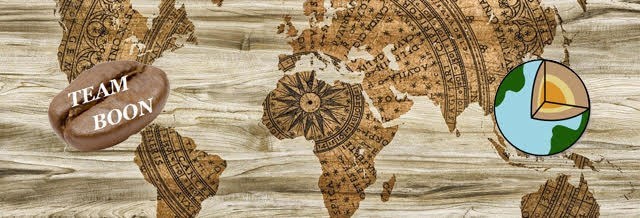
Deze earthcache is oorspronkelijk geplaatst door Lepman en in December 2018 geadopteerd door Team Boon. We willen langs deze weg Lepman bedanken voor het vele jaren onderhouden van deze cache!
 Aardkundig Monument De Grebbeberg
Aardkundig Monument De Grebbeberg
De provincie Utrecht heeft de zuidflank van de Grebbeberg uitgeroepen tot 'aardkundig monument'. Voor velen is de Grebbeberg een bekend punt. Dat heeft niet alleen te maken met de rol van verdedigingslinie, die de Grebbeberg in de Tweede Wereldoorlog speelde. Het heeft ook te maken met het bijzonder reliëf in het landschap. Dat was voor de provincie aanleiding om de Grebbeberg in het Europese Natuurbeschermingsjaar 1995 tot aardkundig monument uit te roepen. Daarmee is de Grebbeberg het eerste aardkundige monument in de provincie Utrecht.
De Grebbeberg is een deel van de Utrechtse Heuvelrug. Deze heuvelrug is gevormd in de voorlaatste ijstijd, tot zo'n 150.000 jaar geleden. Landijs vanuit Scandinavië bereikte toen ons land. Traag voortbewegend oefende het zoveel druk uit op de bodem dat aarden wallen werden opgestuwd. Dat noemen we nu 'stuwwallen'. Een uitloper van het landijs lag in de huidige Gelderse Vallei. Aan weerszijden daarvan vinden we nu stuwwallen: de Utrechtse Heuvelrug in het westen en de Veluwe in het oosten. Deze stuwwallen waren aanvankelijk in het zuiden met elkaar verbonden. Uitslijping (erosie) door de rivier, vanaf het einde van de voorlaatste ijstijd, zorgde voor de opening in de stuwwal tussen Rhenen en Wageningen. Daarbij ontstond uiteindelijk het steile reliëf van de Grebbeberg, zoals we dat nu zien.
De stuwwal, waarvan de Grebbeberg deel uitmaakt, bestaat voornamelijk uit materiaal dat de rivier hier heeft afgezet. Door de stuwende werking van het landijs is die afzetting 150.000 jaar geleden schuin omhoog komen te staan. Duidelijk zichtbaar is het steile reliëf van de Grebbeberg, veroorzaakt door de uitslijpende werking van het rivierwater van de Neder-Rijn en haar voorlopers.
Hoe kan deze earthcache gelogd worden:
Je kunt op het gegeven coördinaat parkeren bij het informatiebord. Geef antwoorden op de volgende vragen en stuur het antwoord op vraag 2 via ons profiel bovenaan de pagina of mail het naar gcteamboon@gmail.com. Bij goedkeuring mag er gelogd worden. Een foto is niet verplicht maar zou wel erg leuk zijn.
- 1. Loop naar N51 57.179 E5 36.396 en noteer de hoogte.
- 2. Ga de trap op (wees voorzichtig) en bepaal het hoogteverschil tussen de onderste trede van de trap en de bovenste trede van de trap.
- Optioneel: Loop via N51 57.159 E5 36.249 naar N51 57.134 E5 36.257. Maak een foto van tenminste één teamlid en GPS met de Neder-Rijn op de achtergrond.
 Geological Monument De Grebbeberg
Geological Monument De Grebbeberg
The province of Utrecht has pronounced the southern side of the Grebbeberg a 'geological monument'. For many people the Grebbeberg is a well known area. Not only because of the role it played during WWII as a defence line, but also it has an exceptional land topography in the landscape. This was for Utrecht the reason to name the Grebbeberg a geological monument in 1995, the "European Natureprotectionyear". That's how the Grebbeberg became the first geological monument in the province of Utrecht.p>
The Grebbeberg is part of the Utrechtse Heuvelrug (ridge). This ridge was formed during the Saalien glaciation, till about 150,000 years ago. A continental glacier from Scandinavia reached Holland in that time. Slowly moving forward it had such a pressure on the soil that this was pushed away and upwards to form ridges. These ridges are called 'moraine'. Part of this glacier was situated in the current 'Gelderse Vallei'. On both sides of it we now find moraines: the 'Utrechtse Heuvelrug' in the west and the 'Veluwe' in the east. These moraines were initially attached in the south. Erosion caused by the river, from the end of the Saalien, caused the opening in the moraine between Rhenen and Wageningen. The result was the steep land topography of the Grebbeberg, as we see it nowadays.
The Grebbeberg is part of the moraine and consists mainly of material that the river left here. The forces of the glacier caused that the material was tilted upwards 150,000 years ago. Clearly visible is the steep land topography of the Grebbeberg, caused by the erosion of the river Neder-Rijn and her predecessors.
How can this earthcache be logged:
You can park your car at the given coordinate near the information panel. Give answers to the following questions and send the answer of question 2 via our profile at the top of the page or email to gcteamboon@gmail.com. After our approval you can log this cache. A picture is not required but would be very nice.
- 1. Walk to N51 57.179 E5 36.396 and mark the altitude.
- 2. Walk up the stairs (be careful) and determine the difference in altitude between the first step of the stairs and the last step of the stairs.
- Optional: Walk to N51 57.159 E5 36.249 and from there to N51 57.134 E5 36.257.Take a picture of at least one team member and GPS with the 'Neder-Rijn' (the river below) in the background.
An Earthcache is an educational form of a virtual cache. The reward for these caches is learning more about the planet on which we live - its landscapes, its geology or the minerals and fossils that are found there. Earthcaches are developed in association with the Geological Society of America. For more information go to (www.earthcache.org)
